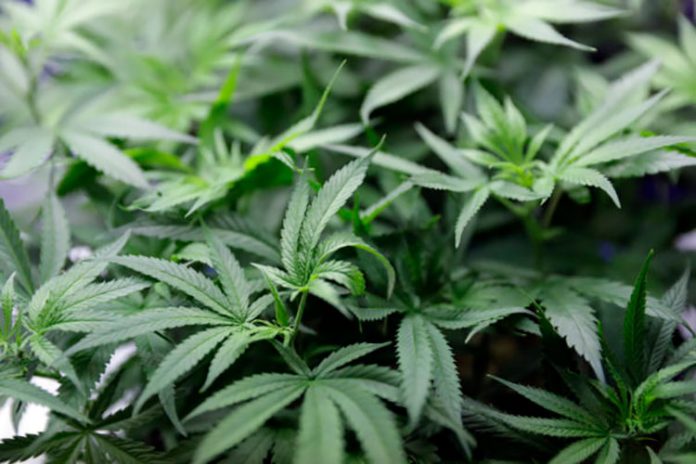Cannabis will be the burning issue facing Santa Barbara County officials in two meetings this week, with the Board of Supervisors assessing the options for taxing the industry and a related ballot measure, and the Planning Commission weighing in on proposed land-use and zoning ordinance amendments to regulate cannabis operations.
The supervisors meeting is scheduled for 9 a.m. Tuesday in the Board Hearing Room on the Fourth Floor of the County Administration Building at 105 E. Anapamu St., Santa Barbara.
Planning commissioners are slated to meet at 9 a.m. Wednesday in Room 17 of the Engineering Building at 123 E. Anapamu St.
Initially, supervisors were given the options for taxing cannabis operations based on their square footage, per ounce of product or as a percentage of gross receipts, with medical and nonmedical marijuana taxed at the same or different rates, either countywide or just in the unincorporated areas.
Other options included setting a “not to exceed” amount, establishing rates by license type, including a sunset clause and determining the frequency of collection.
On Tuesday, the board will consider two tax rate options — one hammered out by county staff based on previous board discussions of the initial options, and the other submitted as an alternative by the cannabis industry.
However, the staff is only recommending its option developed with industry input.
That version would establish rates based on license types, applying a 2 percent tax on gross receipts for nurseries and distributors, 4 percent on cultivators and manufacturers and 6 percent on retailers.
For vertically integrated operations, the tax rate would be capped at 8 percent.
The goal of the rates, as directed by the board, are to not exceed 30 percent when combined with the taxes the state will be assessing.
The tax would apply to medical and nonmedical cannabis alike, affect only businesses in the unincorporated area and have no sunset clause. The frequency of collection would be determined by the treasurer-tax collector.
Supervisors have a choice of setting up assessments as a general tax, which could be used for any county expense, or a special tax, which could only be used for expenses designated prior to its approval. Either way, because it will be a new tax, it must be approved by voters before it can be enacted.
The staff is recommending a general tax, which will require a four-fifths vote by the board to place it on the ballot but only a majority vote by the public for approval.
Only a majority vote by the board would be needed to put a special tax on the ballot, but it would require a two-thirds majority vote by the public.
All of the taxation plans — as well as the land-use, zoning and licensing ordinances that have yet to be approved — will hinge on voters approving whatever tax measure appears on the ballot as well as the county’s ability to deposit the funds in a financial institution.
If the tax measure fails or if no financial institution will accept the funds, the supervisors are likely to simply ban all cannabis operations in the county.
The county also plans to segregate all revenues from cannabis license fees and taxes from all other county revenues, which according to staff would require either significant changes to the county’s accounting process or a duplication of those processes, leading to increased costs.
If supervisors can agree on a taxation plan and language for a ballot measure Tuesday, staff will be directed to return with final versions of both for approval at the Jan. 30 meeting, which would allow the measure to be placed on the June ballot.
If they can’t agree, the delay might mean holding the tax measure until the November ballot.
On Wednesday, the Planning Commission plans to hold a public hearing on land-use ordinance amendments and a licensing program for cannabis operations, then formulate a recommendation to the Board of Supervisors.
The staff is recommending that commercial cannabis operations be prohibited within 600 feet of a school or day care or youth center, with manufacturing and distribution operations only allowed as an accessory use to cultivation in the AG-I and AG-II zones.
Cultivation on lots in existing developed rural neighborhoods that would use a roadway through the neighborhood for access would have to obtain a conditional use permit.
General development standards for cannabis operations would include energy conservation, fencing and security, landscape and screening, lighting, noise and odor abatement plans.
Cultivation operations would have to avoid prime soils, could not use lighting in hoop houses, would require transportation management plans and incorporate water-saving features.
Manufacturing could only be used as an accessory to cultivation, would not be allowed as part of a home occupation or cottage food operation and, if volatile chemicals are used, would require a training program for employees.
Distribution also would be allowed only as an accessory to cultivation.
Microbusinesses could have a retail component but delivery would only be allowed as a retail option in the AG-II zones.
Cannabis cultivation and support facilities would be considered compatible on lands under agricultural preserve contracts, but manufacturing — except for extraction — as well as retail sales, testing and marketing would be prohibited on Williamson Act lands.
Processing, distribution and manufacturing — extraction only — of cannabis from off-site sources would be allowed but limited to 49 percent of the total volume of cannabis processed on the premises.














